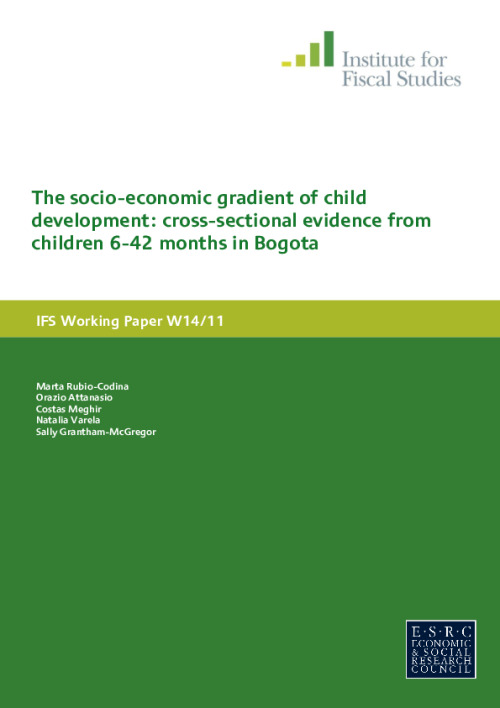We study the socio-economic gradient of child development on a representative sample of low- and middle-income children aged 6-42 months in Bogota, using the Bayley Scales of Infant Development, a high quality test based on direct observation of the child’s abilities. We find a statistically significant difference between children in the 90th and 10th percentile of the wealth distribution in our sample of 0.33 standard deviations (SD) in cognition, 0.29 SD in receptive language and 0.38 SD in expressive language at 14 months. The socio-economic gap increases substantially with age to 1 SD (cognition), 0.80 SD (receptive language) and 0.69 SD (expressive language) by 42 months. While the gap persists after controlling for mediating factors such as parental and biomedical characteristics, the level of stimulation in the home, and the quality of the institutional care setting; its size is significantly reduced by variables related to the home environment – i.e. parental investments in care quantity and quality. These findings have important implications for the design of well-targeted, effective and timely interventions that promote early childhood development.
This paper is also published as part of the Inter-American Development Bank Working Paper series No. IDB-WP-527.












